In the world of women’s soccer, few rivalries captivate audiences quite like the ongoing battle between the England Women’s National Football Team and the Australia Women’s National Football Team.
This clash of titans has shaped the landscape of international women’s football, leaving an indelible mark on the sport’s history.
Let’s dive into the thrilling timeline of this rivalry, exploring its impact on the global stage and its significance for fans worldwide, including those in the United States.
The Birth of Rivalry Begins
The seeds of this epic rivalry were sown in the late 2000s, setting the stage for what would become one of the most exciting matchups in women’s soccer. The first official encounter between these two powerhouses laid the foundation for years of intense competition to come.
On March 15, 2008, England and Australia faced off in a match that would go down in history as the beginning of their storied rivalry. The atmosphere was electric, with both teams eager to prove their mettle on the international stage. England emerged victorious in this initial clash, but the close scoreline hinted at the fierce battles that lay ahead.
Early standout players from both sides began to make their mark. For England, the likes of Kelly Smith showcased their skill and determination, while Australia’s Lisa De Vanna demonstrated the attacking prowess that would become a hallmark of the Matildas’ style of play.
Media reactions to this budding rivalry were mixed, with some dismissing it as just another international matchup. Little did they know that this was the start of something truly special in the world of women’s soccer.
The 2009 FIFA Women’s World Cup Qualifiers

The rivalry between England and Australia truly began to heat up during the qualifiers for the 2009 FIFA Women’s World Cup in Germany. These matches were more than just stepping stones to the tournament; they were fierce battles that would set the tone for years to come.
In a crucial qualifier, England faced Australia in a match that would prove pivotal for both teams’ World Cup journeys. The stakes were high, and the tension was palpable as both sides fought tooth and nail for a spot in the prestigious tournament.
Key players stepped up when it mattered most. England’s Fara Williams controlled the midfield with precision, while Australia’s Sarah Walsh posed a constant threat up front. The match was a tactical chess game, with both teams showcasing their strengths and exposing each other’s weaknesses.
Ultimately, England emerged victorious, securing their place in the World Cup and dealing a blow to Australia’s hopes. This result not only impacted the tournament qualifications but also added fuel to the growing rivalry between these two soccer powerhouses.
The 2011 FIFA Women’s World Cup Clash
Fast forward to the 2011 FIFA Women’s World Cup in Germany, and the stage was set for another epic encounter between England and Australia. The tournament context added an extra layer of intensity to an already heated rivalry.
On July 1, 2011, the two teams clashed in a group stage match that would prove crucial for their tournament progression. The build-up to the game was intense, with both sides aware of the potential consequences of a loss.
The match itself was a showcase of skill, determination, and tactical acumen. England’s attack, led by the dynamic Ellen White, put constant pressure on the Australian defense. However, the Matildas, true to their fighting spirit, refused to back down.
In a tightly contested battle, England emerged victorious with a 2-1 scoreline. The match was a turning point for both teams, with England gaining confidence and momentum, while Australia was left to regroup and reassess their strategy.
The aftermath of this clash saw both teams learning valuable lessons. For England, it was a confirmation of their ability to perform on the biggest stage. For Australia, it was a wake-up call that would fuel their determination in future encounters.
The 2015 FIFA Women’s World Cup Quarter-Final
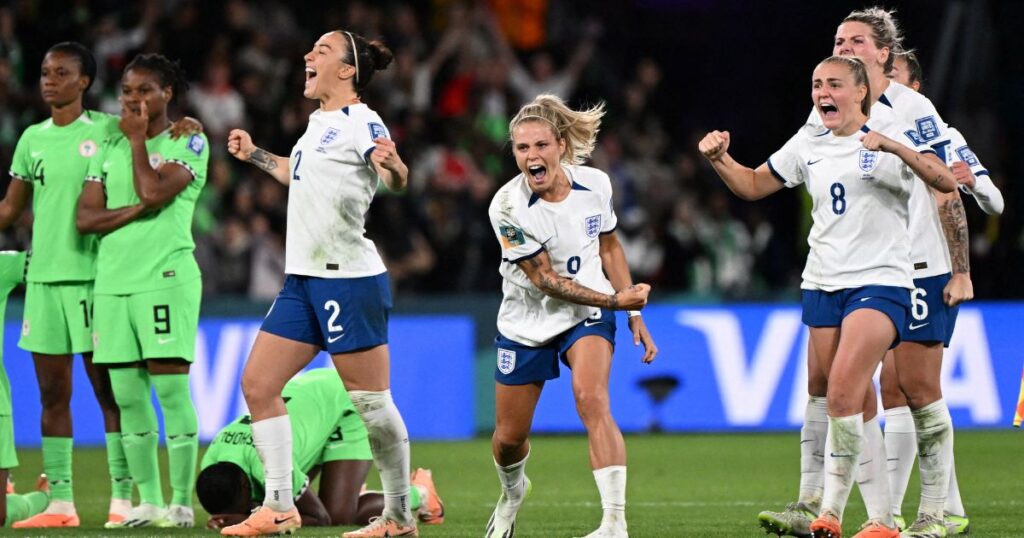
The rivalry reached new heights during the 2015 FIFA Women’s World Cup in Canada. On June 27, 2015, England and Australia faced off in a high-stakes quarter-final match that would go down in the annals of women’s soccer history.
Pre-match expectations were sky-high, with both teams in excellent form leading up to the encounter. The tactical battle between the two sides was a chess match of the highest order, with each team trying to exploit the other’s weaknesses while playing to their own strengths.
The match itself was a nail-biter from start to finish. England’s defense, marshaled by the indomitable Steph Houghton, stood firm against the relentless Australian attack led by the ever-dangerous Sam Kerr. The game-changing moment came when Laura Bassett scored a crucial goal, tipping the scales in England’s favor.
England’s 1-0 victory was a testament to their resilience and tactical discipline. For Australia, it was a heartbreaking loss that would serve as motivation for years to come. This match not only decided who would progress in the tournament but also added another chapter to the growing legend of the England-Australia rivalry.
The 2016 SheBelieves Cup Draw
The rivalry between England and Australia extended beyond World Cup encounters, finding new battlegrounds in prestigious tournaments like the SheBelieves Cup. This competition, held in the United States, provided a unique stage for these two teams to showcase their skills and continue their fierce competition.
On March 6, 2016, England and Australia faced off in a match that ended in a 1-1 draw. While not as high-stakes as their World Cup encounters, this game was significant in its own right. It demonstrated the evolution of both teams and their ability to compete at the highest level consistently.
For USA fans watching the tournament, this match offered valuable insights into the global landscape of women’s soccer. The tactical approaches and individual performances provided a benchmark against which the USA team could measure itself.
Key takeaways from the match included:
- The growing depth of talent in both squads
- The importance of adaptability in international competitions
- The rising standard of women’s soccer globally
This encounter in the SheBelieves Cup served as a reminder that the England-Australia rivalry was not confined to major tournaments but was a constant presence in the world of women’s soccer.
Also Read This: Javaughn J. Porter: Blueface Son All You Need to Know
The 2017 Women’s International Champions Cup
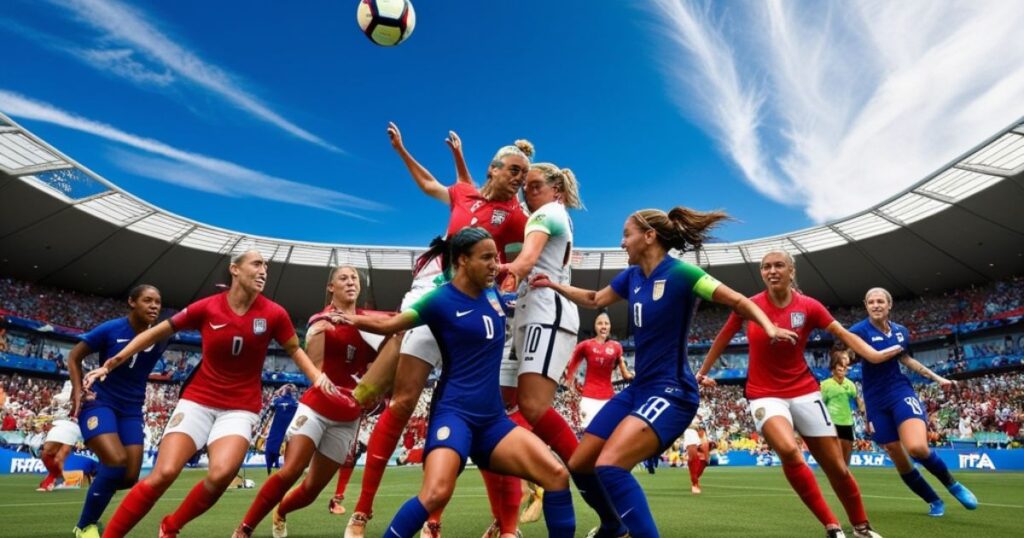
The 2017 Women’s International Champions Cup provided another platform for England and Australia to renew their rivalry. This tournament, featuring top clubs and national teams, was a showcase of the best talent in women’s soccer.
On August 15, 2017, the two teams clashed once again, resulting in a closely fought 1-1 draw. The match highlights included:
- Spectacular saves from goalkeepers on both sides
- Intricate passing sequences showcasing tactical evolution
- Moments of individual brilliance from star players
The tactical analysis of this game revealed how both teams had grown since their previous encounters. England’s possession-based style clashed with Australia’s direct, high-pressure approach, resulting in a fascinating tactical battle.
This match was also a testament to the growth of women’s soccer evident in the competition. The skill level, tactical sophistication, and physical fitness on display were clear indicators of the sport’s rapid development.
Smart SIMs are becoming essential in today’s tech world. With rapid digital advancements, having a smart SIM card means more than just having a phone connection. It’s about security, convenience, and access to a range of services. This article will guide you through understanding smart SIM registration and its significance in everyday life.
The 2019 FIFA Women’s World Cup Quarter-Final
The 2019 FIFA Women’s World Cup in France saw another chapter added to the England-Australia saga. On June 25, 2019, the two teams met in a quarter-final match that would prove to be one of the most thrilling encounters in their rivalry.
The build-up to this match was intense, with media from both countries hyping up the encounter. The stakes were higher than ever, with a semi-final spot on the line.
Key moments from the match included:
- Ellen White‘s clinical finishing for England
- Sam Kerr‘s relentless pressure on the English defense
- Tactical adjustments from both coaches that swung the momentum back and forth
England emerged victorious with a 3-0 win, but the scoreline didn’t tell the full story of a closely fought battle. The post-match interviews revealed the emotional toll of the encounter, with players from both sides acknowledging the intensity of the rivalry.
The 2023 FIFA Women’s World Cup Semi-Final

The most recent and perhaps most significant clash between England and Australia came in the semi-final of the 2023 FIFA Women’s World Cup, co-hosted by Australia and New Zealand. On August 16, 2023, the two teams met in a match that would determine who would advance to the World Cup final.
The build-up to this match was unprecedented. With Australia playing on home soil, the pressure and expectation were immense. England, as the reigning European champions, came into the match with confidence but aware of the challenge they faced.
The match itself was a spectacle that lived up to the hype:
- England’s tactical discipline and clinical finishing
- Australia’s never-say-die attitude and home crowd support
- Moments of individual brilliance from players like Lauren James and Mary Fowler
England’s 3-1 victory was a statement of their quality and mental strength. For Australia, the loss was heartbreaking but also a source of pride, having reached the semi-final stage and galvanized a nation behind women’s soccer.
This match had a profound impact on women’s soccer globally, showcasing the sport at its very best and attracting record-breaking viewership numbers.
The Rivalry’s Evolution: Key Moments
The England-Australia rivalry has been shaped by a series of pivotal matches and events. Here’s a timeline of some of the most significant moments:
- 2008: First official match – England victory
- 2011: World Cup group stage clash – England wins 2-1
- 2015: World Cup quarter-final – England triumphs 1-0
- 2016: SheBelieves Cup draw – Teams show growing parity
- 2019: World Cup quarter-final – England’s 3-0 victory
- 2023: World Cup semi-final – England wins 3-1 on Australian soil
This rivalry has evolved from a simple international matchup to one of the most anticipated clashes in women’s soccer. The changing dynamics over the years reflect the growth of both teams and the sport as a whole.
When compared to other international rivalries, including those involving the USA team, the England-Australia matchup stands out for its consistency, high stakes, and the quality of play on display.
The Impact of Individual Performances
Over the years, standout players from both teams have left their mark on this rivalry. Their performances have not only decided matches but also inspired a generation of soccer players.
For England:
- Ellen White: Her clinical finishing has been crucial in multiple encounters
- Steph Houghton: A rock in defense and a leader on the pitch
- Lucy Bronze: Her marauding runs from defense have changed games
For Australia:
- Sam Kerr: A constant threat and one of the world’s best strikers
- Caitlin Foord: Her creativity and skill have troubled England repeatedly
- Ellie Carpenter: A dynamic fullback who embodies Australia’s fighting spirit
These players have had career-defining moments in England vs Australia matches, etching their names in the history of this rivalry.
“Playing against Australia is always special. The intensity, the skill level, it brings out the best in us,” – Ellen White, former England striker.
Tactical Battles on the Pitch
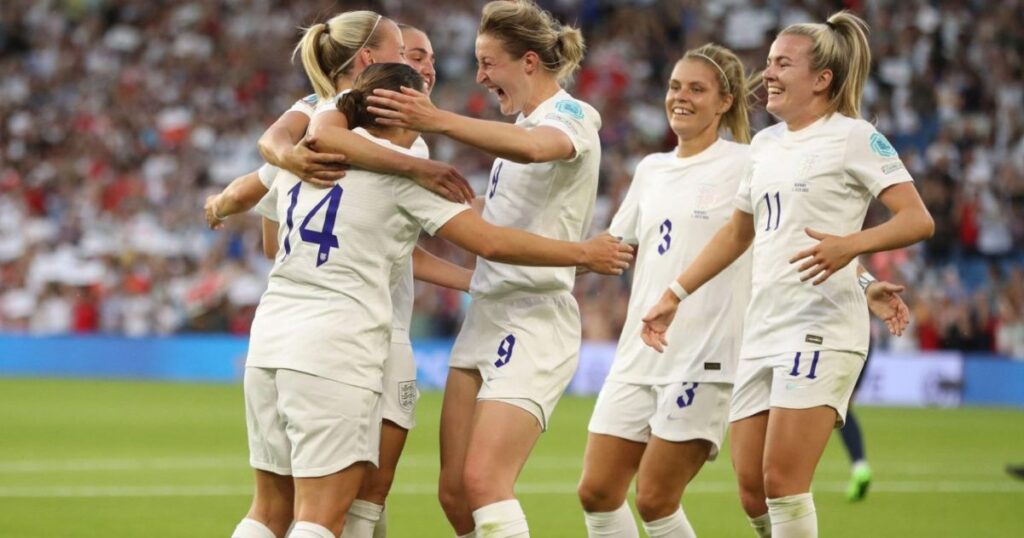
The England-Australia rivalry has been as much a battle of tactical minds as it has been of individual skill. Over the years, we’ve seen a fascinating evolution of playing styles for both teams:
England’s Tactical Evolution:
- Early emphasis on physical, direct play
- Transition to a more possession-based approach under Phil Neville
- Current blend of possession and pressing under Sarina Wiegman
Australia’s Tactical Journey:
- Initially known for a high-tempo, attacking style
- Development of a more structured defensive approach
- Current focus on quick transitions and exploiting space
Key tactical shifts in important matches have often been the deciding factor. For instance, England’s ability to control the midfield in the 2023 World Cup semi-final was crucial to their victory.
These tactical battles have had a wider influence on women’s soccer, inspiring coaches around the world to innovate and adapt their strategies.
The Role of Coaches and Management
The coaches have played a pivotal role in shaping this rivalry. Their strategies, player selections, and in-game decisions have often been the difference between victory and defeat.
England’s Coaching Impact:
- Phil Neville (2018-2021): Brought a new level of professionalism and tactical sophistication
- Sarina Wiegman (2021-present): Has instilled a winning mentality and tactical flexibility
Australia’s Coaching Journey:
- Ante Milicic (2019-2020): Focused on developing a more possession-based style
- Tony Gustavsson (2020-present): Has emphasized attacking flair and mental toughness
The management strategies employed by these coaches offer valuable lessons for women’s soccer coaching globally, including in the USA. Their ability to adapt to different opponents and tournament conditions has been crucial to their success.
Fan Engagement and Support
The growth of fan bases for both England and Australia has been phenomenal over the course of this rivalry. The atmosphere at England vs Australia matches is often electric, with passionate supporters creating an unforgettable experience.
Fan engagement metrics:
- Social media followers for both teams have grown exponentially
- Match attendance records have been broken repeatedly
- TV viewership numbers have reached new heights, particularly for World Cup encounters
When compared to USA women’s soccer fan culture, there are both similarities and differences:
| Aspect | England-Australia | USA |
| Fan passion | Intense, especially during major tournaments | Consistently high across all competitions |
| Media coverage | Growing rapidly | Extensive and well-established |
| Youth participation | Increasing due to visibility of national teams | High, with strong grassroots programs |
The rivalry has played a significant role in boosting the profile of women’s soccer in both countries, inspiring a new generation of fans and players.
Media Coverage and Public Interest
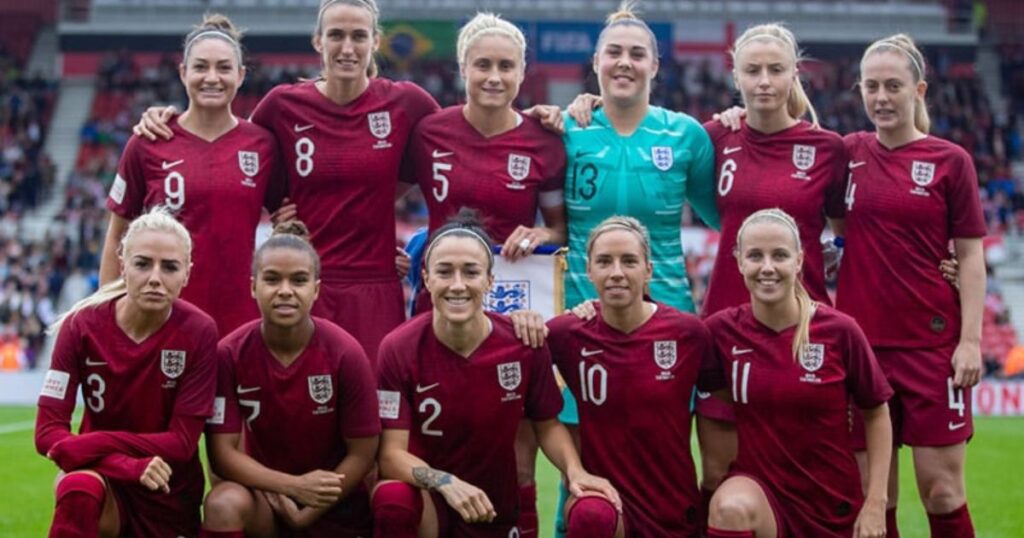
The evolution of media attention on the England-Australia rivalry has been remarkable. What started as sporadic coverage of international matches has grown into comprehensive, round-the-clock reporting on every aspect of the rivalry.
Key developments in media coverage:
- Increased live TV broadcasts of matches
- In-depth analysis and tactical breakdowns in sports media
- Player profiles and human interest stories gaining prominence
- Social media playing a crucial role in fan engagement and news dissemination
The impact of social media on the rivalry cannot be overstated. Platforms like Twitter and Instagram have allowed fans to engage directly with players and teams, creating a more immersive experience.
For promoting women’s soccer in the USA, there are valuable lessons to be learned from the England-Australia rivalry:
- The importance of narrative and storylines in building interest
- The power of consistent, high-quality coverage across multiple platforms
- The role of player personalities in attracting and retaining fans
Cultural and National Significance
The England-Australia rivalry transcends sport, tapping into the broader cultural and historical connections between the two nations. In both countries, the success of the women’s national teams has become a source of national pride.
In England:
- The Lionesses have become symbols of female empowerment
- Their success has challenged traditional gender norms in sports
- Increased funding and support for grassroots women’s soccer
In Australia:
- The Matildas have united a nation known for its love of various sports
- Their performances have elevated women’s soccer to new heights of popularity
- Increased media coverage and commercial sponsorship for women’s sports
The parallels with USA’s soccer culture are interesting:
- All three countries have seen women’s soccer challenge the dominance of traditionally male-dominated sports
- The national teams have become powerful symbols of national identity and pride
- Success in women’s soccer has led to increased investment and participation at all levels
The Future of the Rivalry
The England-Australia rivalry shows no signs of slowing down. With both teams consistently performing at the highest level, future encounters are eagerly anticipated by fans worldwide.
Upcoming matches and tournaments to watch out for:
- Friendly matches in the lead-up to major tournaments
- Potential clashes in the next World Cup and Olympics
- Encounters in invitational tournaments like the SheBelieves Cup
Potential developments in team strategies:
- England may continue to refine their possession-based approach under Sarina Wiegman
- Australia could focus on developing young talent to complement their established stars
The implications for global women’s soccer rankings are significant. As these two teams continue to push each other to new heights, they’re likely to maintain their positions at the top of the world rankings, challenging the USA’s dominance.
Key Players to Watch
The future of this rivalry will be shaped by the next generation of stars. Here are some rising talents to keep an eye on:
For England:
- Lauren James: A creative force with exceptional technical skills
- Alessia Russo: A striker with a knack for crucial goals
- Ella Toone: A midfield maestro with vision and passing ability
For Australia:
- Mary Fowler: A prodigious talent with maturity beyond her years
- Ellie Carpenter: A dynamic fullback with both defensive and attacking prowess
- Kyra Cooney-Cross: A midfield talent with excellent ball control and vision
These players have the potential to be game-changers in future encounters, carrying the torch of this storied rivalry into the next generation. Their development will be crucial in shaping the tactical approaches of both teams in the coming years.
When compared to emerging USA talent, these players showcase the global nature of women’s soccer development. The technical skills and tactical awareness of these young stars reflect the increasing professionalism and competitiveness of the women’s game worldwide.
Historical Impact of Their Matches
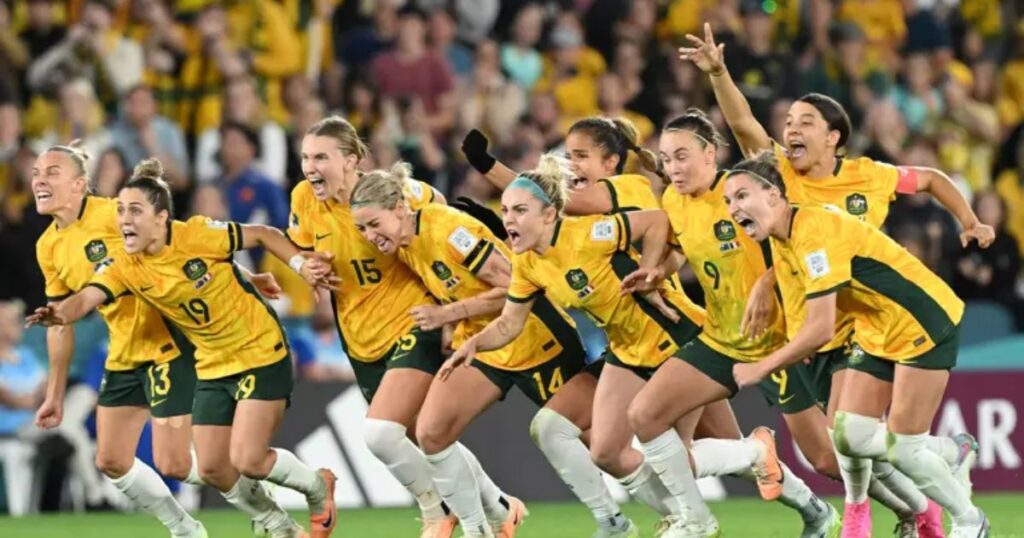
The England vs Australia rivalry has had a profound influence on the growth of women’s soccer. Their matches have often served as showcases for the sport, demonstrating the high level of skill, athleticism, and tactical sophistication in women’s football.
Some record-breaking moments and milestones include:
- The 2015 World Cup quarter-final, which drew record TV viewership in both countries
- The 2023 World Cup semi-final, which set new attendance records for a women’s soccer match in Australia
- Multiple matches that have pushed the boundaries of tactical innovation in women’s soccer
These encounters have inspired other national teams, including the USA, to elevate their game. The high-quality performances in England-Australia matches have set new standards for international women’s soccer, pushing teams worldwide to improve their technical and tactical approaches.
The Role of Tournaments and Competitions
Various tournaments have played a crucial role in shaping the England-Australia rivalry. Each competition has added a unique flavor to their encounters:
- FIFA Women’s World Cup: The pinnacle of women’s soccer, where their matches have often had the highest stakes
- Olympics: Another major stage where both teams have showcased their talents
- SheBelieves Cup: An invitational tournament that has provided additional opportunities for high-level competition
- Women’s International Champions Cup: A platform for testing tactical innovations and emerging talent
These competitions have been instrumental in elevating women’s soccer globally. They’ve provided consistent high-level matches, increased media exposure, and opportunities for player development.
The USA’s role in international tournaments, particularly as hosts of events like the SheBelieves Cup, has been significant in providing platforms for rivalries like England-Australia to flourish.
These tournaments have helped create a more competitive and professionalized environment for women’s soccer worldwide.
The Impact of Coaching Changes
Coaching transitions have played a pivotal role in the evolution of the England-Australia rivalry. Key coaching changes for both teams have often led to shifts in playing style and team dynamics:
England’s Coaching Transitions:
- Hope Powell (1998-2013): Laid the foundation for England’s rise
- Mark Sampson (2013-2017): Led England to third place in the 2015 World Cup
- Phil Neville (2018-2021): Introduced a more possession-based style
- Sarina Wiegman (2021-present): Brought tactical flexibility and a winning mentality
Australia’s Coaching Journey:
- Tom Sermanni (1994-1997, 2005-2012): Developed Australia’s attacking style
- Alen Stajcic (2014-2019): Led Australia to new heights in international rankings
- Ante Milicic (2019-2020): Focused on technical development
- Tony Gustavsson (2020-present): Emphasizes aggressive, high-pressing football
These coaching changes have often resulted in tactical shifts that have directly impacted the outcomes of England-Australia matches. For example, Sarina Wiegman’s approach was crucial in England’s victory in the 2023 World Cup semi-final.
The lessons from these coaching transitions are valuable for USA women’s soccer coaching development. They highlight the importance of:
- Tactical adaptability
- Long-term player development
- Building a consistent team culture
- Balancing tradition with innovation
The Evolution of Women’s Football
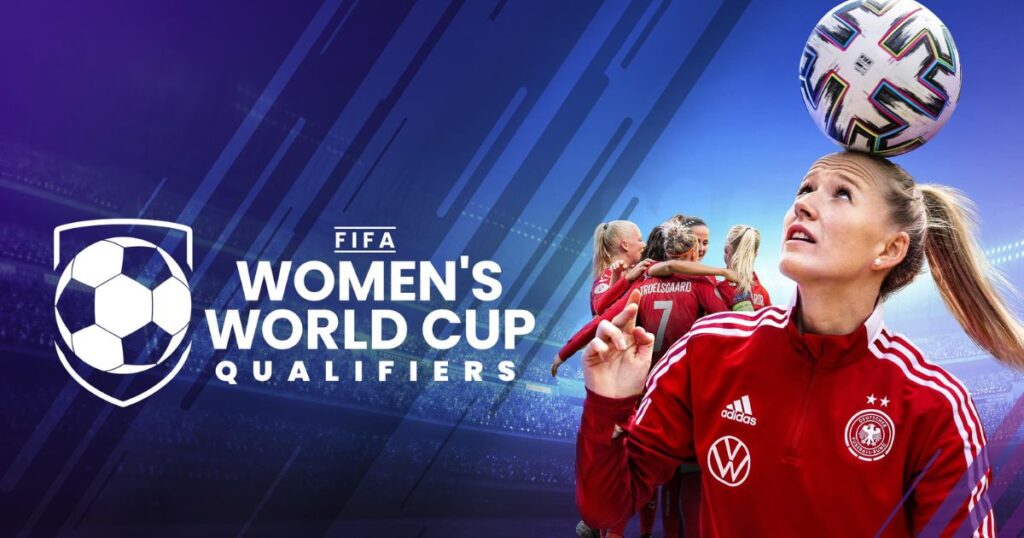
The England vs Australia matches have been a microcosm of the broader evolution of women’s football. These games have reflected:
- Increased physicality: The speed and intensity of play have increased dramatically over the years
- Tactical sophistication: From simple formations to complex, fluid systems
- Technical brilliance: The skill level of players has risen exponentially
- Professional standards: Improvements in training, nutrition, and sports science
- Media coverage: From sparse reporting to comprehensive, multi-platform coverage
Technological advancements evident in their games include:
- VAR (Video Assistant Referee) implementation
- Advanced performance analysis tools
- Improved training and recovery technologies
The rivalry has played a significant role in pushing women’s soccer forward by:
- Setting new standards of excellence
- Attracting increased investment in the sport
- Inspiring the next generation of players
- Challenging societal perceptions of women’s sports
Conclusion
The England Women’s National Football Team vs Australia Women’s National Football Team timeline is more than just a series of matches – it’s a testament to the growth, passion, and excellence of women’s soccer. From their early encounters to their recent World Cup battles, this rivalry has consistently delivered thrilling football, tactical innovation, and unforgettable moments.
As we look to the future, it’s clear that this rivalry will continue to play a crucial role in shaping the landscape of women’s soccer. The upcoming matches between these two powerhouses are not just games; they’re pivotal moments in the ongoing story of women’s football.
For fans in the USA and around the world, the England-Australia rivalry offers a glimpse into the bright future of women’s soccer. It showcases the sport at its best – competitive, skillful, and inspiring. As the rivalry evolves, it will undoubtedly continue to push the boundaries of what’s possible in women’s football, setting new standards and inspiring the next generation of players and fans alike.
Call-to-Action:
- Follow both the England and Australia women’s national teams on social media for the latest updates and behind-the-scenes content.
- Support women’s soccer in your local community – attend matches, volunteer, or sponsor youth programs.
- Mark your calendars for the next England vs Australia match – you won’t want to miss these two titans of women’s soccer facing off again!
As we eagerly anticipate the next chapter in this thrilling rivalry, one thing is certain: the future of women’s soccer is bright, and the England vs Australia matchup will continue to be at the forefront of the sport’s evolution.

Hello, I’m Dan Brown, a writer at Matchplayerstat. I explore the dynamic world of players and celebrities, delivering captivating insights and updates. Join me on Matchplayerstat.com for the latest in player stats and celebrity news.”
